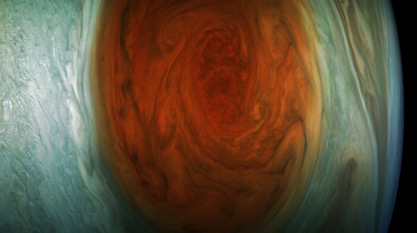 Physical Sciences
Physical Sciences
Astronomer Builds System with 416 Potentially Habitable Planets – In His Mind


You may recall the discovery back in February of the way-overhyped TRAPPIST-1 system, with seven planets including three hailed as potentially habitable. (See “Remember Those Exciting ‘Earth-Like’ Planets of the TRAPPIST-1 System? The Honeymoon Is Over.”) Riffing on this, astronomer Sean Raymond announces, “I Built a Stable Planetary System with 416 Planets in the Habitable Zone.”
He means, of course, that he built it in his mind. Of all he has to say, the opening paragraphs of his article for Nautilus may be the most interesting. This tells you something from a sociological perspective:
When Frank Drake was a boy, growing up in 1930s Chicago, his parents, observant Baptists, enrolled him in Sunday School. By the time he was 8 years old, he suspected his religion, and others around the world, were, to some extent, environmentally determined — local chance events helped shape them. He began to think the same might be true of civilization, for humans and, perhaps, aliens as well — but he thought it better to keep these thoughts to himself.
But not for long: He would go on to found S.E.T.I., the Search for Extraterrestrial Intelligence, and laid out a simple way to estimate the number of civilizations within our galaxy that we could hope to listen-in on.
Thus the origins of the famous Drake equation, where N equals the “number of communicable civilizations in the Milky Way.”
In short, N = R × NEarth × FLife × FIntelligence × FCommunication × L. To determine the value of N, we just need to know the other numbers.
How much speculation about life elsewhere in the cosmos is similarly built on a foundation of disillusion with religion right here on earth? Probably quite a lot. Religion, many of these folks believe, is not only wrong, but it is bad, as it keeps us from asking certain scientific questions. It’s welcome when this is stated publicly. Though Raymond only hints at it, he gives a perhaps inadvertent glimpse into the motivations of many astrobiologists.
As for the speculative calculations offered by Dr. Raymond, well…he is a capable researcher (with the French Laboratoire d’Astrophysique de Bordeaux), but they probably don’t have much to do with reality. After a lengthy buildup, he writes:
I’ll jump ahead to the grand finale. Using a couple of orbital dynamics tricks, I built a planetary system with 416 planets in the habitable zone.
This system is completely stable — I double-checked with computer simulations. But nature would have a tough time forming this system. If it exists, it could only have been built by a super-advanced civilization. That’s why I call it the Ultimate Engineered Solar System.
Imagine the stories you could tell in these Ultimate Solar Systems! Each binary planet has a close neighbor hovering larger than the moon in the sky. The night sky has an amazing wealth of wandering stars, the other planets tracing paths as they orbit the star.
Back to NEarth. We astronomers are happy to have measured that up to half of the stars in the Milky Way appear to host Earth-sized planets in the habitable zone (NEarth is up to 50 percent for red dwarfs, the dominant stars in the galaxy by number). TRAPPIST-1 is a great example that goes even further and packs three planets in the habitable zone. But I’m hoping for some super-habitable systems with 10, 20, or hundreds of potentially life-bearing planets. They are sure to be low probability systems, but with five hundred billion stars in our galaxy (and sci-fi fans crossing their fingers) it’s definitely worth looking!
His speculation depends on two “twists.”
First, two planets can share the same orbit around the star! These are called Trojan pairs (and are not to be confused with the condoms). This almost doubles the number of planets that can fit on a given orbit.
The second twist is binary planets. Our moon is almost half the size of Earth, and Charon is almost as big as Pluto. It is entirely plausible to imagine two Earths orbiting each other.
Yes, Trojan planets are possible in principle. We have Trojan asteroids in our Solar System that orbit with Jupiter. But, there isn’t any evidence of actual Trojan planets.
The same goes for binary planets. Such planets would be easily detectable with the Kepler spacecraft. As Dr. Raymond admits in his article, these systems with many planets in the habitable zones should be called “engineered” systems, because it is unlikely they would form like that naturally. Lastly, if multiple habitable (and inhabited, due to panspermia) planets in a system were common, why don’t we find ourselves living in such a system?
He’s right, it’s always worth looking. But as for finding, don’t hold your breath.
Photo: Jupiter, Great Red Spot, via NASA/JPL-Caltech/SwRI/MSSS/Gerald Eichstädt.


